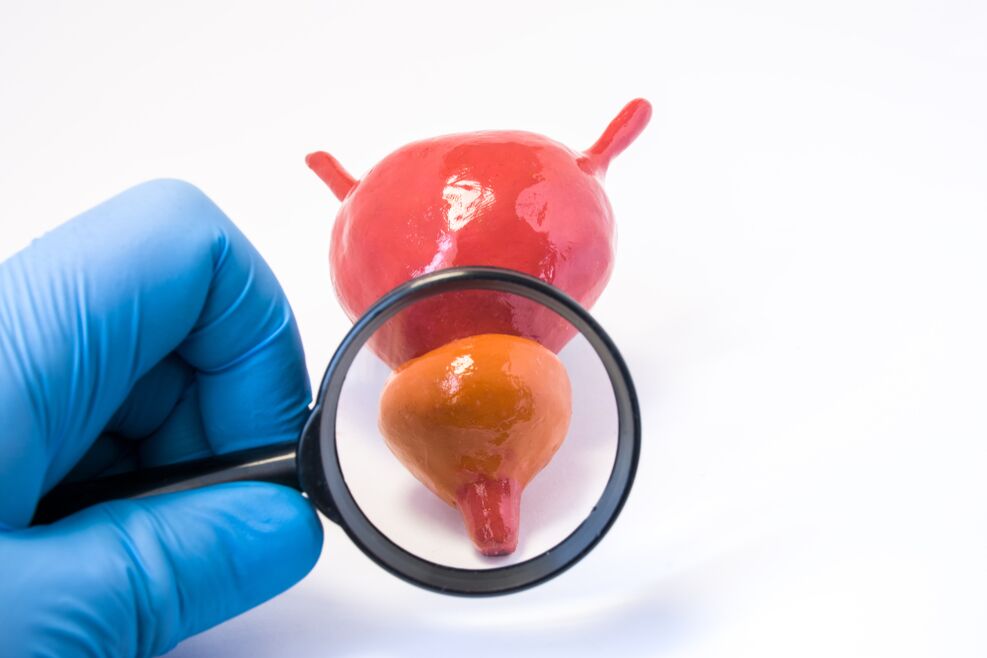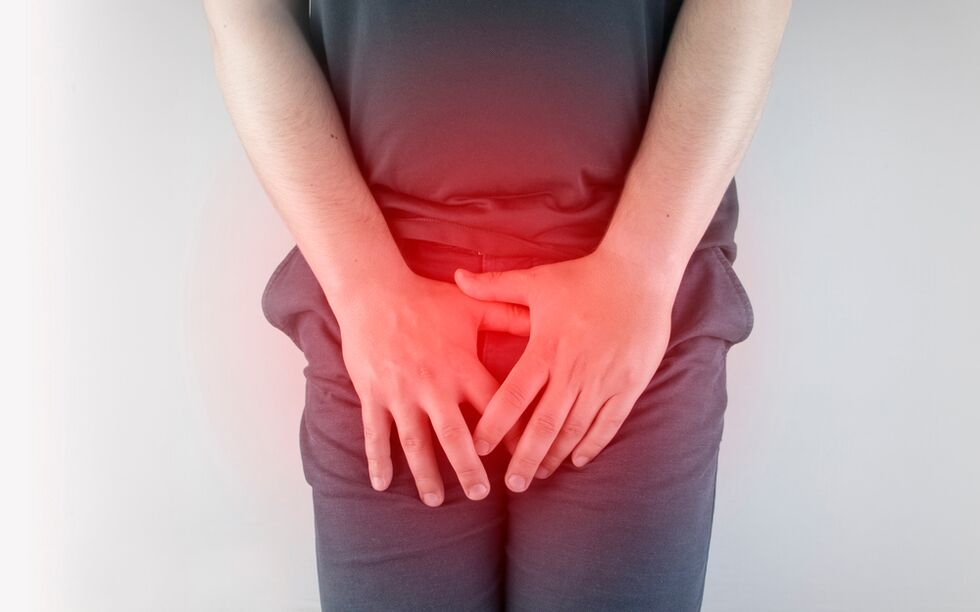The prostate is a small, unpaired organ located in the pelvic cavity just below the bladder and in front of the rectum. The urethra passes through the thickness of the prostate gland.

Structure and function of the prostate gland
The prostate is made up of smooth muscle fibers and secretory cells. The main function of the gland is to secrete secretions that are involved in liquefying the ejaculate, ensuring the movement of sperm and protecting them from the aggressive environment of the vagina. The prostate gland is also a valve that prevents the flow of urine during ejaculation and seminal fluid urination.
A healthy adult male prostate weighs only about 20 g. The hormones of the pituitary gland and adrenal gland, androgens, estrogens have a great effect on its condition. The size of the prostate can change during life: in boys it is small, during puberty the prostate grows dramatically. When the secretion of hormones begins to fade (this usually occurs at the age of 45-50), the reverse development of the gland normally begins.
However, the reverse process often occurs - benign prostatic hyperplasia (BPH) or prostate adenoma.
What is prostate adenoma?

This disease has several synonyms: prostate adenoma, benign prostatic hyperplasia, benign prostatic nodular hypertrophy, and others.
The name reflects the essence of the pathological processes that occur in the gland: the glandular tissue grows, forming dense nodules. The size of the prostate increases, causing urethral compression and smooth muscle cell spasm. This leads to the appearance of symptoms of the disease.
Prostate size has no direct effect on urinary damage. Symptoms may be absent with a significant increase or may appear in the early stages of the disease.
BPH has benign growth, i. e. , it does not metastasize. This fundamentally differentiates BPH from prostate cancer. The main reference point for the onset of prostate malignancy is prostate-specific antigen (PSA) levels.
Causes of BPH
According to statistics, men under the age of 30 tend to have no signs of BPH. As we age, the incidence of BPH increases, reaching a peak by the ninth decade of life (90%).
The causes of prostate adenoma are still not fully understood. Prostate adenoma is thought to be multifactorial in nature. The role of the male sex hormone testosterone has long been known in both normal prostate growth and the development of BPH. It is known that men between the ages of 40 and 50 have a period of deepest restructuring of hormonal regulation, while circulating testosterone levels decrease. A decrease in the amount of testosterone and a relative increase in estrogens (female sex hormones) in the male body lead to an increase in the prostate.
Changes in hormonal ratios in the male body were the starting point for studying the causes and mechanism of benign prostatic hyperplasia. In addition to hormonal disorders, the inflammatory process associated with the development of prostate edema is important in the development of prostate adenoma, as it may play an important role in increasing the number of prostate cells and organ edema as a mechanical factor contributes to the increase in disease symptoms.
Symptoms of prostate adenoma

Enlargement of the prostate gland leads to compression of the urethra and causes smooth muscle cramps. This process is impaired by urination:
- the need to wake up at night to empty the bladder;
- decreased urine flow tension;
- feeling of incomplete bladder emptying after urination;
- the appearance of a urinary stimulus that is difficult to control;
- increased urination during the day;
- small amount of urination.
Often the above symptoms are accompanied by difficulty at the beginning of the urination act, which is even more pronounced in the morning and forces you to start urinating. These symptoms cause medical attention.
Treatment of prostate adenoma
The course of the disease significantly impairs quality of life, and lack of proper treatment can lead to surgery. Due to the progressive nature of the disease, BPH drug therapy should be performed for a long time. Depending on the frequency of symptoms, therapy may vary significantly. Drug therapy eliminates urinary problems, reduces complaints, and restores quality of life. You should also be aware that prostate adenoma can be asymptomatic or cause non-specific urinary problems that do not resemble the classic picture of the disease. This misleads patients and wastes valuable time. But the earlier you start treatment, the more effective it is.
Prevention of BPH
There are currently no specific prevention methods. One preventative measure is an annual visit to the urologist after 40 years. At the meeting, the doctor can assess the symptoms, perform the necessary examination, and prescribe effective treatment.




































